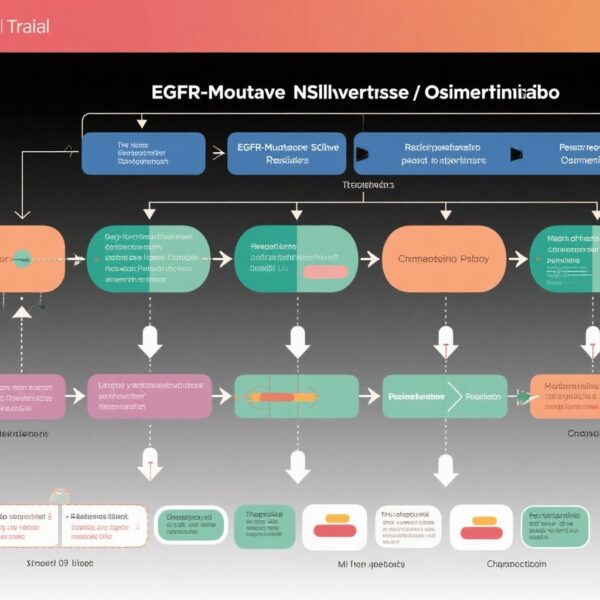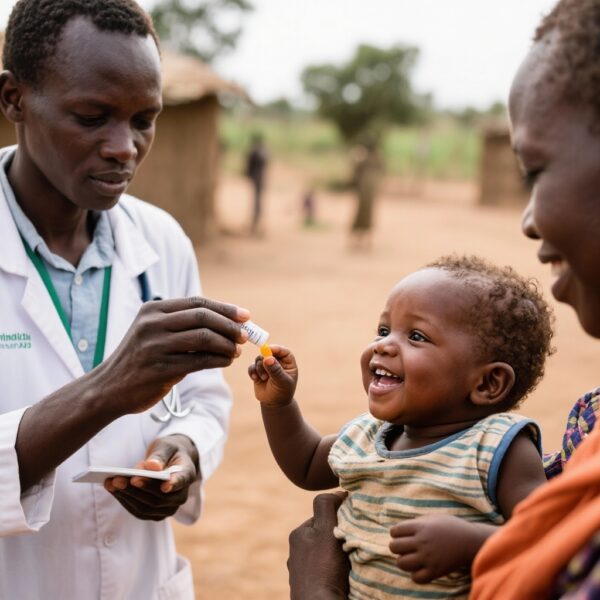Introduction
The landscape of non-small-cell lung cancer (NSCLC) treatment has rapidly evolved with the advent of molecular-targeted therapies. Among the diverse genetic alterations identified in NSCLC, HER2 (ERBB2) mutations represent an important but historically challenging subset. Occurring in approximately 2 to 4% of NSCLC cases, HER2 mutations have been associated with a distinct biological profile and potential responsiveness to targeted agents. Despite the recognition of HER2 as a therapeutic target in breast and gastric cancers, effective targeted treatments for HER2-mutant NSCLC remain limited. The recent development and clinical evaluation of sevabertinib, a novel oral reversible tyrosine kinase inhibitor (TKI), aims to address this unmet need.
Background and Disease Burden
NSCLC remains the leading cause of cancer-related mortality worldwide. While targeted therapies against EGFR, ALK, and ROS1 have improved outcomes, a subset of patients harbor HER2 mutations without suitable options. Traditional chemotherapy offers limited benefits, and the absence of approved HER2-targeted therapies for NSCLC underlines the necessity for dedicated agents. The identification of HER2 mutations as oncogenic drivers provided a strong rationale for developing specific TKIs. Sevabertinib, with its preclinical activity against HER2 alterations, was subsequently evaluated in clinical settings.
Study Design and Methods
The clinical investigation into sevabertinib comprised an open-label, multicenter, multicohort phase 1-2 trial (NCT05099172), enrolling patients with advanced HER2-mutant NSCLC. Participants were stratified into three cohorts based on prior treatment history:
– Cohort D: Previously treated, no prior HER2-targeted therapy
– Cohort E: Previously received HER2-directed antibody-drug conjugates (ADCs)
– Cohort F: Treatment-naïve
All patients received a twice-daily oral dose of 20 mg sevabertinib. The primary endpoint was objective response rate (ORR) per independent central review, while secondary endpoints included duration of response (DoR) and progression-free survival (PFS). Safety was closely monitored for adverse events (AEs), graded per CTCAE criteria.
Key Findings and Results
As of June 27, 2025, a total of 209 patients participated across the three cohorts, with median follow-up durations of 13.8 months (cohort D), 11.7 months (cohort E), and 9.9 months (cohort F). The results demonstrated promising antitumor activity:
– Cohort D: Out of 81 patients, ORR was 64% (95% CI, 53-75), with a median DoR of 9.2 months and median PFS of 8.3 months.
– Cohort E: Among 55 patients, ORR was 38% (95% CI, 25-52), with median DoR of 8.5 months and median PFS of 5.5 months.
– Cohort F: 73 patients showed an ORR of 71% (95% CI, 59-81), with a median DoR of 11.0 months; PFS data were still immature.
Adverse events were common but manageable. Grade 3 or higher drug-related AEs occurred in 31% of patients, predominantly diarrhea, reported in 84-91% of cases, with severe diarrhea (grade ≥3) in 5-23%. Treatment discontinuation due to AEs was low at 3%.
Expert Interpretation
The activity of sevabertinib across diverse patient cohorts underscores its potential as a targeted therapy for HER2-mutant NSCLC. Its activity in treatment-naïve and pretreated populations suggests versatility. The safety profile, characterized mainly by diarrhea, aligns with its mechanism as a TKI, and tolerability appears acceptable.
However, limitations include relatively short follow-up for PFS and a need for larger, randomized trials to confirm efficacy and safety. The observed responses are encouraging, particularly given the historical therapeutic challenges in this subgroup.
Biologically, sevabertinib’s reversible inhibition offers a different approach from irreversible agents and may influence resistance mechanisms. The ongoing trials are expected to clarify its role in combination therapies or as a first-line option.
Conclusions and Future Perspectives
Sevabertinib emerges as a promising targeted agent for HER2-mutant NSCLC, demonstrating meaningful response rates and manageable toxicity. Its approval and integration into clinical practice could significantly impact a subset of patients historically lacking effective options. Future research should focus on long-term outcomes, resistance mechanisms, and combination strategies to maximize benefit.
Funding for the study was provided by Bayer. This investigation represents a significant step forward in precision oncology for NSCLC, with potential to shape future treatment paradigms.
References:
Le X, Kim TM, Loong HH, et al. Sevabertinib in Advanced HER2-Mutant Non-Small-Cell Lung Cancer. N Engl J Med. 2025; 10.1056/NEJMoa2511065.



